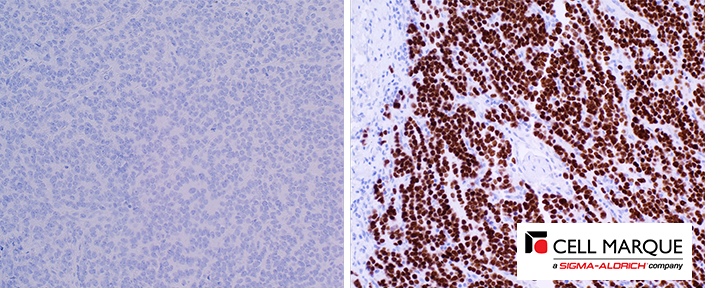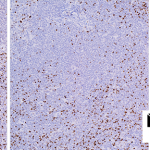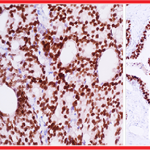Spotlight on PHOX2B (EP312)
Products are for professional/laboratory use only.
Neuroblastomas are neuroendocrine tumors arising in the sympathetic nervous system. Neuroblastomas are found almost exclusively in infants and children, with the majority being under 2 years old. It is the most common extracranial solid tumor found in infants, and accounts for about 7% of all childhood cancers diagnosed each year. 65% of neuroblastomas originate in the abdomen (with the majority arising in the adrenal glands) and 35% originate in other sites such as the thoracic cavity.1 Neuroblastomas present as small round blue cell tumors, and therefore may need to be differentially diagnosed from other small round blue cell tumors, such as CITED1-positive Wilms tumors, CD99 and NKX2.2-positive PNET/Ewing sarcomas, myogenin and MyoD1-positive rhabdomyosarcomas, as well as retinoblastomas and desmoplastic small round cell tumors.
Paired-like homeobox 2B (PHOX2B) is a transcription factor expressed exclusively in the nervous system. Mutations in the PHOX2B gene have been linked to neuroblastoma development, and neuroblastomas immunohistochemically express the PHOX2B protein. Other small round blue cell tumors such as rhabdomyosarcoma, Ewing sarcoma, and Wilms tumor are negative for PHOX2B, suggesting that this is a valuable addition to a pediatric solid tumor panel.2
Benefits of Rabbit Monoclonal PHOX2B:
-
For in vitro diagnostic use
-
Nuclear PHOX2B expression distinguishes metastatic neuroblastoma from surrounding tissue, such as bone marrow, more definitively than cytoplasmic stains like synaptophysin.2
-
Differentiates neuroblastoma from rhabdomyosarcoma, Ewing sarcoma, and Wilms tumor
References:
-
Hata JL, Arch Pathol Lab Med. 2015; 139:543-6.







